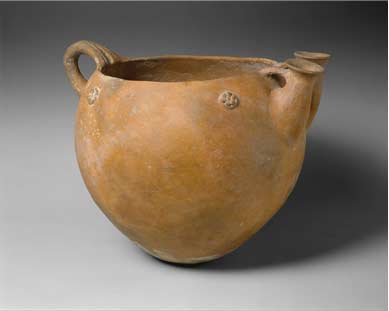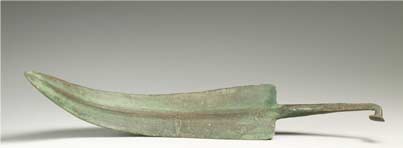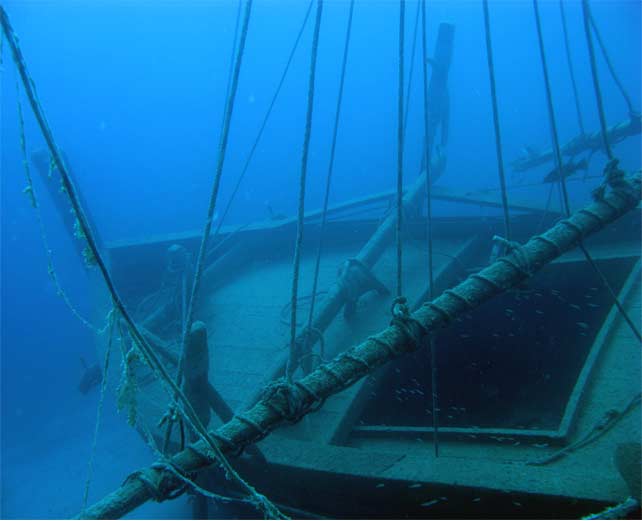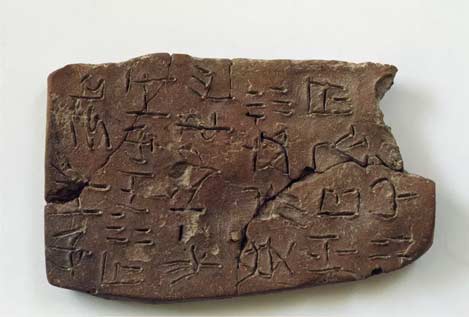
Although covering an area of just 3,570 square miles, Cyprus, situated in the northeast section of the Mediterranean Sea, is the 3rd biggest island in this region of the ancient world, after sardinia and sicily. unique culture dates from as far back as the end of the 9th millennium B.C., when the first permanent settlers are thought to have arrived from southern Anatolia or the Syro-Palestinian coast, bringing with them a developed culture. However, there is evidence of presence of seasonal hunters of pygmy elephants and pygmy hippopotami before that period, ca. 10,000 B.C. The earliest Neolithic settlers did have an organised society based on agriculture and animal husbandry. Several settlements have been excavated throughout the island of Cyprus, including Khirokitia and Kalavasos near the south coast. During the later part of the Neolithic period ca. 8500–3900 B.C, islanders began to work clay, making artifacts that they baked and often decorated with abstract patterns in red on a light slip.

The culture of the succeeding Chalcolithic period (ca. 3900–2500 B.C.) may have been brought to the island by a newer wave of settlers coming from the same regions as the Neolithic settlers. Their art and religious practices were quite sophisticated. Stone and clay female figures, often with accentuated genitals symbolizing the fertility of humans, animals, and the soil, all essential needs of the agrarian community. In the later part of the Chalcolithic period, settlers began making small tools and decorative ornaments from the native copper (chalkos). this is where the phase Chalcolithic is derived, referring to the transition from the Stone Age to the Bronze Age.

Cyprus's unique geographic location at the crossroads of seafaring trade in the eastern Mediterranean made it a very important center of trade and commerce in antiquity. Already in the Early Bronze Age (ca. 2500–1900 B.C.) and Middle Bronze Age (ca. 1900–1600 B.C.), Cyprus had established relationships with Minoan Crete and also Mycenaean Greece, as well as with the ancient civilizations of the near East - Syria and Palestine, Egypt, and southern Anatolia. From the first part of the 2nd millennium B.C., Near Eastern texts referring to the kingdom of "Alasia," a name that is very likely synonymous with the island of Cyprus, attest to Cypriot connections with the Syro-Palestinian coast. The rich copper resources on the island provided Cypriots with a commodity highly valued by their trading partners and in great demand throughout the ancient Mediterranean world. Cypriots exported large quantities of this valuable raw material together with other goods, such as opium in small base ring ware jugs resembling the capsules of opium poppies in exchange for luxury goods such as gold, silver, ivory tusks, perfumed oils, wool, horses, chariots, precious furniture, and other finished objects.Pottery from the prehistoric Cypriots, especially the pottery produced in the Early and Middle Bronze Ages, is imaginative and exuberant in shape and decoration. Terracotta figurines were produced in large numbers and placed inside tombs throughout the Bronze Age. As in the Chalcolithic period, they most commonly resemble female figures that symbolize regeneration. Other funerary objects, especially those buried with males, include bronze tools and weapons plus Gold and silver jewelry. The island had highly developed glyptic art, which demonstrates influences from both the Near East and the Aegean region.During the Late Bronze Age (ca. 1600–1050 B.C.), copper was being produced and exported on a huge scale, and Cypriot trade expanded to include the Near East, Egypt, and the Aegean region. Communications between the pharaoh of Egypt and the king of Alasia, dating from the first half of the fourteenth century B.C., provides valuable information about trading relations between Egypt and Cyprus. The Cesnola Collection has a number of objects of faience and alabaster that were imported into Cyprus from Egypt during this period. The scope of Cypriot maritime trade at this time is proven by the fourteenth-century B.C. shipwreck at Ulu Burun recently excavated off the southwest coast of Anatolia. Archaeological remains show that the ship was sailing westerly, having perhaps called at other harbors in the Levant. It had loaded onboard 355 copper ingots (ten tons of copper) in Cyprus, as well as large storage jars, some of them containing fine Cypriot pottery and agric

An undeniable influence of the Aegean onto Cypriot culture during the Late Bronze Age is seen in the development of bronzeworking, writing, jewellery production, seal stone carving,and some ceramic styles, especially in the twelfth century B.C., when Mycenaean settlers were occaisionally arriving on the island. From about 1500 B.C., the Cypriots began using a still undeciphered script, which closely resembles the Linear A of Minoan Crete. Examples exist on baked clay tablets and other documents found at urban centers such as Enkomi (on the eastern coast) and Kalavasos (on the southern coast). Engraved and pointed characters of the script appears on a number of vases in the Cesnola collection at the metropolitan.during the late Bronze Age, Cyprus was an important center for the manufacture of works of art showing an amalgam of local and foreign influences. Stylistic features and iconographic elements taken from Egypt, the Near East, and the Aegean are often mixed together in Cypriot works. Undoubtedly, foreign motifs, and the significance they held, were reinterpreted as they became a part of distinctive local artistic traditions. Cypriot artisans also traveled abroad, and in the twelfth century B.C. it is thought Cypriot metalsmiths may have settled as far west as Sicily and Sardinia.

For Nissi Golen Sands and Nissi 3, contact Antony Ross
For Skaros, please contact George Atzio
+44 7737 540 170. WhatsApp.
+357 99 472 419 WhatsApp
